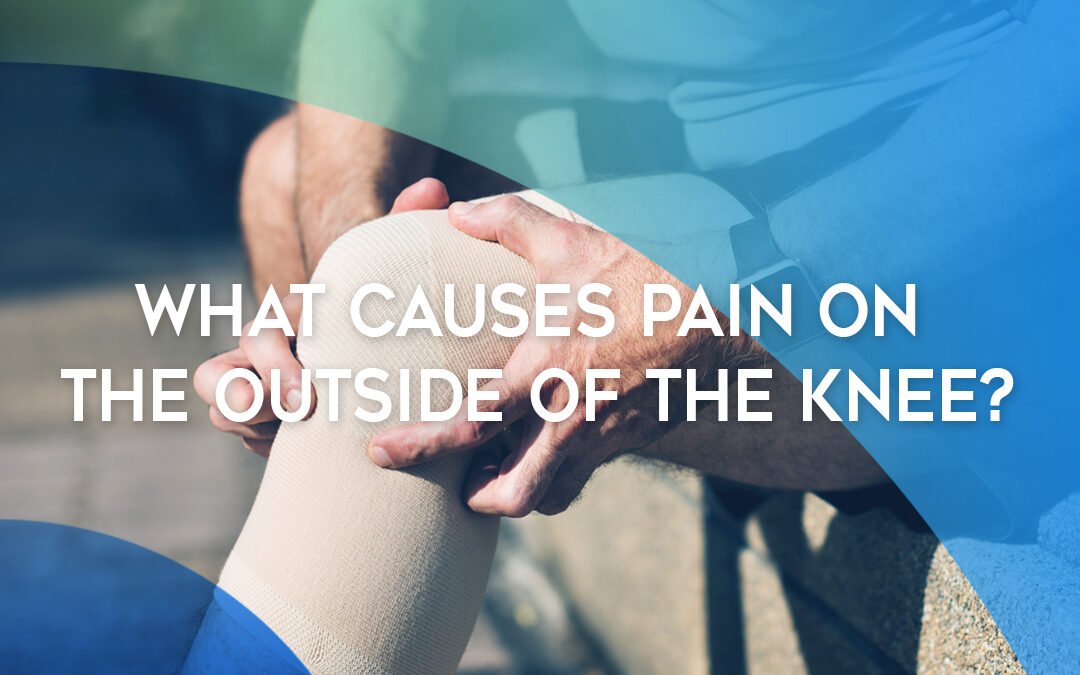What Causes Pain on the Outside of the Knee?
Pain on the outside of the knee is called lateral knee pain. Like other types of knee pain, there are several injuries or underlying conditions that could be at fault for pain on the outer knee. Keep reading to learn the four most common conditions that affect the lateral knee.
Risk Factors for Developing Outer Knee Pain
Who’s at risk for developing lateral knee pain? Anyone is, but pain outside the knee is more common in runners, cyclists and other athletes who perform a lot of bending, twisting or pivoting motions.
Among athletes, a lateral knee injury can develop from poor training habits, including:
- Overuse
- Walking or running on sloping paths, uphill or up stairs
- Running on a track in the same direction every time
- A sudden increase in exercise frequency or intensity
Other common causes of lateral knee injury include:
- Repetitive stair climbing
- Sitting for long periods with bent knees
- Wearing high heels
- Weak or inflexible hip, gluteal and knee muscles
- Malalignment that results from uneven leg lengths, bow legs or flat feet
Additionally, age is a primary risk factor for developing knee injuries. With age, natural wear and tear leaves the knee joint more susceptible to becoming injured.
4 Conditions That Cause Lateral Knee Pain
The following conditions are commonly associated with pain on the outside of the knee.
Iliotibial Band Syndrome (ITBS)
The iliotibial (IT) band is a long piece of connective tissue (fascia) that attaches to the outer hip, stretches down the lateral thigh, and crosses the knee to attach to the top of the shinbone. The IT band stabilizes the outer knee when it flexes and extends. Flexion and extension movements cause the IT band to glide across the femoral epicondyle — a bony protrusion at the knee joint.
Usually, the IT band moves smoothly across the joint. But if inflammation develops in the area, repeated movement of the tissue over the bone can lead to friction, irritation, tightness, inflammation and pain. Iliotibial band syndrome causes pain, stiffness and swelling on the outer knee, right above the joint. Symptoms develop gradually with movement — like exercising, running, walking, climbing stairs — and feel better during rest.
If left untreated, ITBS can worsen to the point where pain is present even at rest. Chronic irritation and inflammation of the IT band can cause decreased range of motion in the knee.
Lateral collateral ligament (LCL) Injury
The lateral collateral ligament is a tough band of tissue that runs along the outside of the knee joint. It connects the bottom of the thigh bone (femur) to the top of the lower-leg bone (fibula). The LCL helps stabilize the outer aspect of the joint.
An LCL injury can stretch, sprain, or partially or completely tear the ligament. The primary cause of an LCL injury is a direct blow to the inside of the knee, which displaces pressure to the outer aspect of the knee and its supportive ligaments. Mild spraining and stretching of the ligament causes minimal symptoms and pain.
A partial or complete ligament tear causes severe pain, swelling, joint instability and loss of joint mobility.
Lateral Meniscus Injury
The knee joint has two tough, rubbery cartilage discs — called menisci — that sit on each side of the joint. The menisci act as cushions and shock absorbers between the thigh bone and the shinbone. While a lateral meniscus injury is less common than a medial meniscus injury, it does happen.
A forceful twist or rotation movement can cause the lateral meniscus to tear. Symptoms include pain, swelling, stiffness, instability and loss of joint mobility. You might hear a popping sound at the time of injury.
Arthritis
Arthritis is a common disease that can affect any part of the knee joint.
- Osteoarthritis — also known as “wear and tear” arthritis — develops when the cartilage protecting joint surfaces begins to deteriorate, causing pain, swelling, and inflammation in the joint. At first, you may only have pain during movement. But as the disease progresses, joint damage causes consistent pain, stiffness, and loss of mobility.
- Rheumatoid arthritis is an autoimmune disorder. It develops when the body’s immune system attacks its own tissues, causing pain, swelling, and inflammation in the joint. At first, symptoms may come and go, but gradually worsen as the disease progresses.
Treatment Options for Lateral Knee Pain
If you’re experiencing knee pain and symptoms that aren’t relieved with ice and rest at home, contact your doctor. Your doctor might prescribe medications, assistive braces, cortisone injections or physical therapy to treat your injury or condition.
If you’re experiencing chronic pain and loss of movement from arthritis or a non-healing knee injury, or if you’ve been told that joint replacement surgery is the only treatment option left for you, contact iO-Core™.
Our clinics administer the iO-Core™ procedure, a minimally invasive procedure that combines orthopedics and biologics to treat degenerating cartilage and underlying bone and tissue damage caused by arthritis and joint injuries. Many people who were told they needed a total joint replacement surgery have found long-term pain relief and greater mobility from iO-Core™ instead.
If traditional treatment methods aren’t effective for your pain, the iO-Core™ procedure may be a viable option. It’s covered by most insurances. Call our team today to learn more and see if you qualify.

